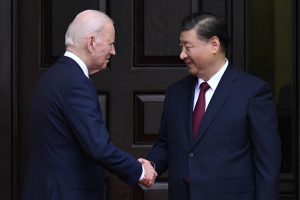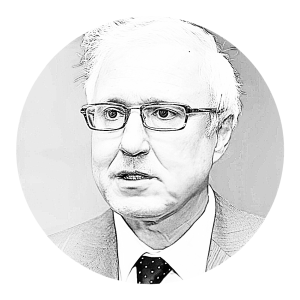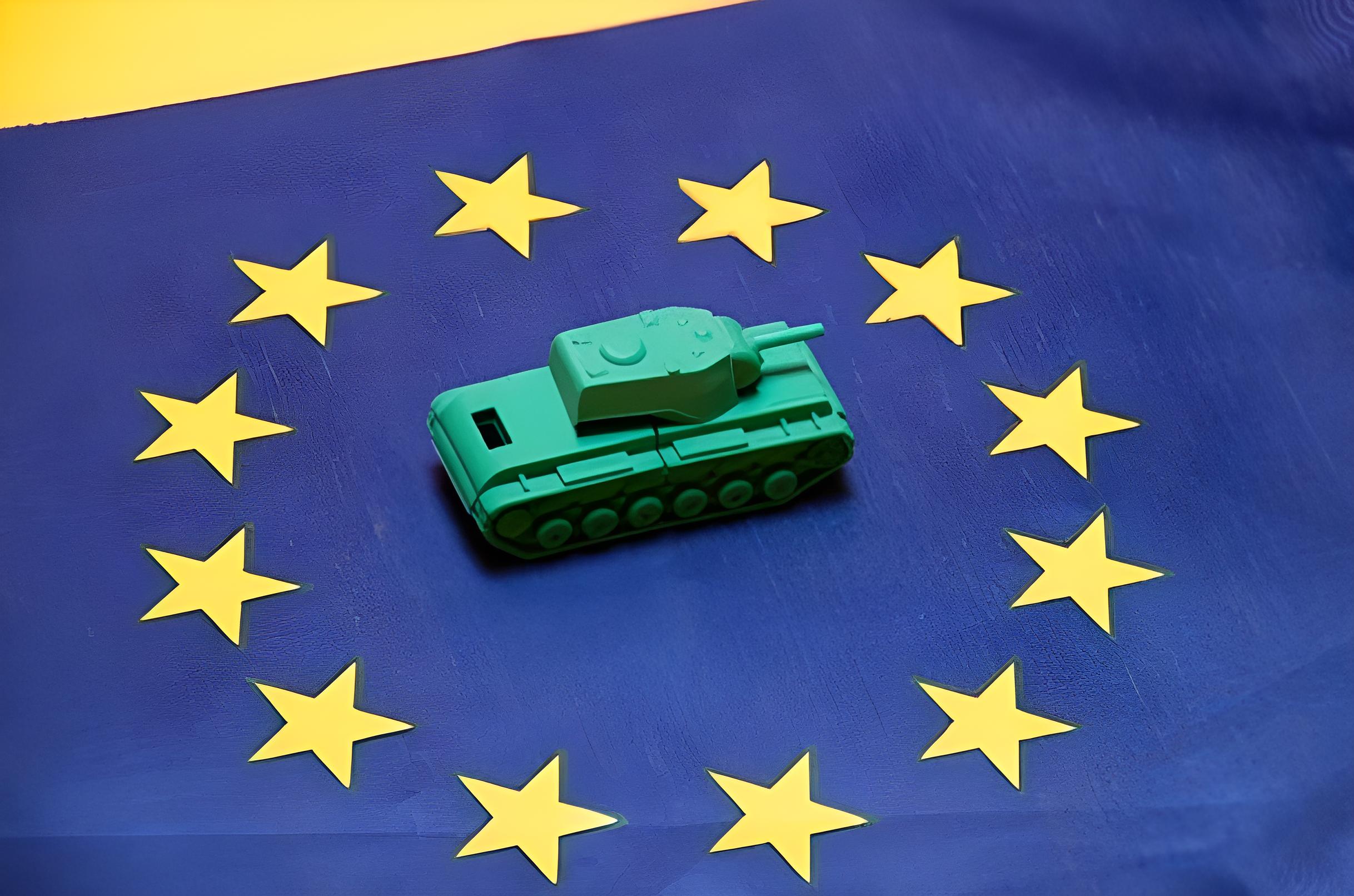
Efforts for Europe’s defense independence do not seem possible as of today. Lack of capacity and international barriers challenge this goal.
August 15, 2023

BRIEF BACKGROUND TO THE EUROPEAN ARMY
The idea to stand up a European Defence Community (EDC) or an EU Defence Union, as dubbed by Ursula von der Leyen, is not a new European project. The enterprise of an autonomous defence for Europe was launched by France in the early 1950s and rejected ironically by the French Parliament in 1954. The primary reason to freeze the project was the intricacies involved for France on how to rein in potential German rearmament almost immediately after World War II. The solution found to this conundrum was the accession of Germany to NATO in 1955 through the U.S. initiative. The first European attempt to create an European Army independent of the U.S., therefore of NATO, had thus turned into an aspirational objective. Europeans had to settle for a stillborn project for establishing Western European Union (WEU) based on the Modified Brussels Treaty. The WEU as an entity remained dormant during the Cold War period and was revived in the early 1990s to last until 2011. The European Security and Defence Identity was nurtured within NATO as the European pillar of the Alliance till the EU instituted common foreign and security policy as the third pillar by the Maastricht Treaty of 1992. Hence, the seeds of an EU autonomous defence outlook were institutionally laid.
POST COLD WAR ERA
The space provided by the post-Cold War period, that is, the absence of a major threat, widened for the EU to proceed on the track of strategic autonomy in terms of defence supported by the accumulated acquis inherited from the European pillar within NATO. The modus vivendi for the EU in launching a separate, but not inseparable defence dimension was formulated at the NATO Washington Summit of 1999 in the form of a package named Berlin plus which ensured that there be no decoupling between NATO and the EU as far as collective defence is concerned and no unnecessary duplication in defence structures and arrangements. The EU ‘defence ship’ set sail after the EU Nice Summit and despite ups and downs like in the second Gulf War of 2003, and the Russia-Georgia War of 2008, culminated in the Lisbon Treaty of 2009 with two important mutual support and assistance clauses included in the Treaty to be invoked by the EU members should there be an armed/terrorist attack against them (Article 42(7) and Article 222). At a time when it was possible to discern the first signs of the U.S.’ isolationist tendencies to surface, and the American policy pivoting more toward Asia-Pacific during the Obama Administration, the EU tendency to broaden the basis of a strategically autonomous defence was rekindled, albeit not in great proportions.
TRACES OF A RIFT BETWEEN THE EU AND THE U.S.
President Trump’s reckless attitude vis-à-vis NATO and the EU accelerated efforts within the EU ranks, particularly championed by France, toward developing a more autonomous EU defence. The referendum on Brexit in the U.K. further exacerbated the mood within the EU and added fuel to deliberations toward further building it. President of the EU Commission Juncker raised the flag much before the Trump period for the need to construct an EU Army. The plot thickened when Chancellor Merkel stated after her return from the G7 Summit in Taormina/Italy ‘We Europeans truly have to take our fate into our own hands — naturally in friendship with the United States of America, in friendship with Great Britain, as good neighbors with whoever, also with Russia and other countries.’ The salvo of calls by the European leaders to tilt more towards strategic autonomy designed to building up an EU Army did not cease during the Trump administration with no concrete results. The EU launched its second strategy document, ‘Global Strategy for the EU’s Security and Foreign Policy’, as well as its initiatives such as Permanent Structured Cooperation (PESCO), Coordinated Annual Review on Defence (CARD), and a renewed European Defence Agency (EDA) to strengthen its strategic autonomy in defence. Statements by the leading EU powers such as France and Germany followed suit in 2018 toward creating an EU army in the absence of critical military assets and capabilities as clearly demonstrated by the operation, for instance, against Libya in 2011 led by France with a coalition of the willing later to be transformed to a NATO operation. The rift between the U.S. and Europe (the EU) widened to such a level that President Macron, disgruntled by the unilateral U.S. decision to withdraw its forces from Syria without consulting Allies and the subsequent Turkish operation in Syria, declared NATO ‘brain dead’ in the Fall of 2019. When President Biden succeeded Trump the majority of Europeans felt more confident on enhancing multilateralism to provide a broader room for strategic autonomy for Europe until Biden decided to withdraw the U.S. forces deployed in Afghanistan without proper consultations within NATO. Biden’s abrupt withdrawal decision from Afghanistan in a disastrous way left a bitter taste for Europeans. Biden’s next steps to establish the U.S-UK-Australia (AUKUS) pact in the Indo-Pacific and the initiative to reenergise the Quadrilateral Security Dialogue (QUAD), comprising the U.S., Australia , Japan, and India, on the heels of the tragic withdrawal from Afghanistan added further insult to injury between the two sides of the Atlantic.
THE EU’S STRATEGIC AUTONOMY AGAIN ON THE CENTER STAGE
High Representative of the EU for Foreign Affairs and Security Policy, Vice-President of the European Commission, Joseph Borrell, raised the issue of strategic autonomy just before Biden took the helm in the U.S. in January 2021 by introducing a wider perspective for it beyond defence. He advocated for widening the scope of strategic autonomy for the EU, lest the EU risk ‘strategic shrinkage.’ He shared his views on a broad understanding of strategic autonomy, including defence (aka European Army), while preparing the EU to adopt the Strategic Compass. The EU Strategic Compass, the document that should be perceived as the third strategic concept for the EU since the early 2000s, was approved by the EU Leaders during the French Presidency Term in March 2022 when the Russian aggression on Ukraine was upending the global security order. The end-result was for the EU to produce a 5000-strong Rapid Deployment Capacity tantamount to a reinforced brigade and 200 Common Security and Defence Policy (CSDP) mission experts to be deployed to crisis areas in case of a contingency. Hence, ‘the mountain gave birth to a mouse’ as the Turkish saying goes. The ongoing war initiated by Russia in Ukraine and the intensifying strategic rivalry between the U.S. and China put the EU strategic autonomy as well as the ambition to create an EU army under crossfire. Consequently, a new wine served in an EU’s old bottle against the backdrop of systemic rivalry dominating the security landscape has demonstrated once again that the ambition to make the EU Army in the foreseeable future is destined to remain as an aspiration for fruition in another Spring. Many EU member states in NATO are still struggling to attain the benchmark set by the Alliance in 2014 of spending 2% of their GDP on defence while the war in Ukraine still continues. There exists a general lack of coherence in the European defence capacity and capability development leading to interoperability deficiencies. The persistent indifference within the EU to broaden the basis of non-EU stakeholders such as Turkey, a strong member of NATO with an expanded defence industry, to participate in EU’s defence projects for achieving at the least economies of scale is a salient feature of a parochial attitude still in display. Keeping the EU ambition on attaining strategic autonomy, including defence but not limited to it, is understandable and legitimate. Nevertheless, given present circumstances in an ever-shifting security landscape, such an ambitious target for strategic autonomy dedicated to defence without full-fledged structures, inclusive of the clear need to adapt the EU’s decision making processes to new and emerging contingencies, and devoid of a nuclear umbrella will continue to be an illusion to pursue in the foreseeable future. Taking the cue from recent discussions on how to proceed in relations between the EU and China, ‘de-coupling’ the EU’s defence from the transatlantic frame premised on the notion of strategic autonomy is, to many realists, a non-starter for the long term.
A curated seletion of FA’s must-read stories.
Written By: BUGRA NARIN
Written By: FURKAN ETIK
Written By: ALPEREN MOROVA
Written By: OMER FARUK KARA
Written By: E. ERDEN
Written By: SHOHREH POOLAB
Written By: ALEYNA TASTAN
Written By: CIHAN KAAN GAZI

Career Ambassador(R). Born in Bursa in 1957. Joined the Turkish Foreign Ministry in 1979. Served in Turkish posts and missions in Islamabad, Deventer, NATO, Brussels and the EU. Appointed to Khartoum and Turkish Delegation to NATO as Ambassador. Last appointment in Ankara was Deputy Undersecretary in charge of bilateral affairs. He received state orders from Sudan and Kazakhstan respectively for his contributions to improving the bilateral ties between Türkiye and those two countries.He is the President of Ankara Policy Center, a well reputed think tank located in Ankara.He writes articles on different aspects of Turkish foreign and security policies, focusing on NATO and European security. Retired from the Ministry in 2019 February.
Written By: ABDURRAHMAN ADIGUZEL
Written By: BEYZANUR SARICICEK
Written By: SELIN ARDIC
Written By: NILAY CELIK
Written By: ELDANIZ GUSSEINOV
Written By: JOSEF SCHOEFL
Written By: SINEM UNALDILAR
Written By: FATIH CEYLAN
FA’s flagship evening newsletter guilding you through the most important world streis ofthe day. Delivered weekdays.
